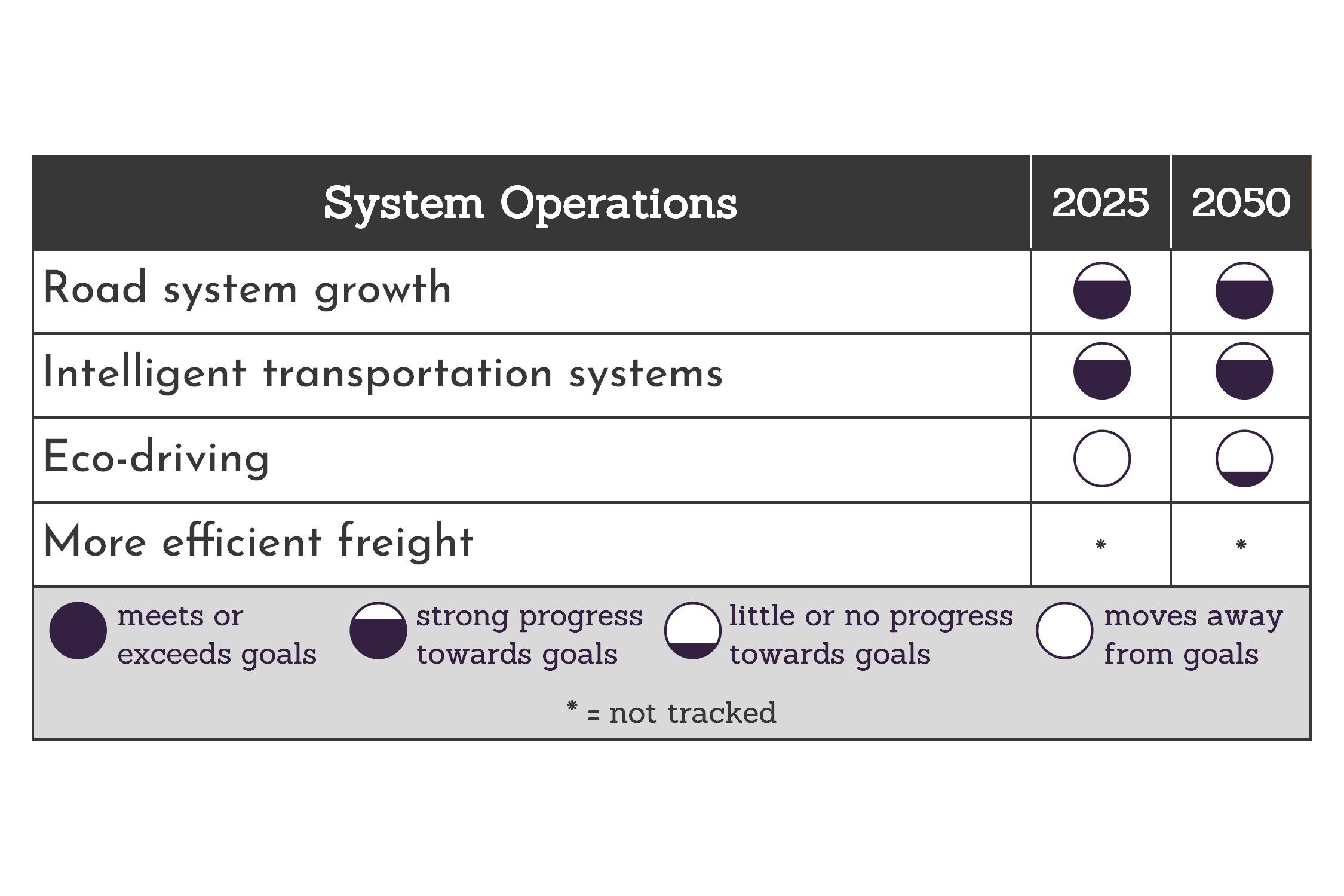
System Operations involves optimizing the efficiency, reliability and safety of Oregon’s transportation system.
“System” includes the roads, transit networks, signals and other transportation resources like state highways, interstates, rail and bus lines, and local streets.
“Operations” means keeping goods and travelers on the transportation system moving efficiently and reliably. This results in less stop-and-go traffic, faster bus rides, fewer crashes, and minimal detours during construction. More efficient transportation systems also allow existing roadways to accommodate Oregon’s growing economy.
The four areas tracked in this category — road system growth, intelligent transportation systems, eco driving, and more efficient freight — work together to reduce greenhouse gas emissions from transportation.
Progress snapshot
Road system growth
Total statewide lane miles increased 9.6% between 2000 and 2021, less than half the rate of Oregon’s population. State-owned roadways accounted for less than 1% of that capacity increase. To continue this positive trend, smart land use and other demand management policies like tolling must be coupled with strategic road investments to limit growth in vehicle miles traveled and emissions from severe congestion.
Intelligent transportation systems
State and local agencies have been investing in new technology over the last decade to improve the efficiency and safety of the transportation system without expanding it, and to reduce crashes and stop-starts that increase emissions.
Eco-driving
Low fuel prices prior to 2020 and more fuel-efficient new vehicles have resulted in fewer Oregonians driving more fuel efficiently. New technology in vehicles and driver education programs may help spur drivers to change their behavior.
More efficient freight
State agencies don’t have data for this category yet because they’re still working with their public and private partners to verify goals and establish metrics.
Explore each category below for a breakdown of our progress.
